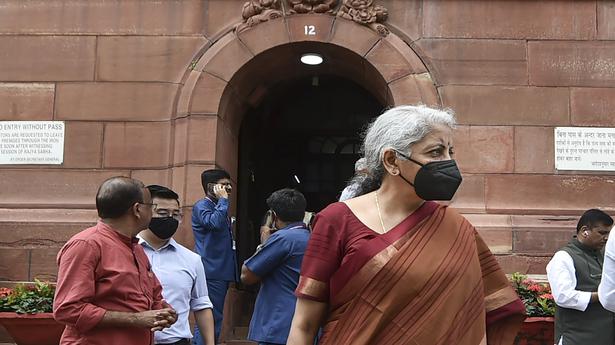The ministry said it expects the manufacturing sector to pick up due to lower input costs and festive demand
The ministry said it expects the manufacturing sector to pick up due to lower input costs and festive demand
The sustained decline in crude oil price since June and the decline in the inflation rate below 7%, combined with the impressive growth in tax revenue collection, translates into a significant easing of concerns over India’s growth and inflation in 2022-23, the Finance Ministry has said.
“It is not necessarily the right thing to do to project either optimism or pessimism too far ahead in these uncertain times. For now, India looks better placed on the growth-inflation-external balance triangle for 2022-23 than it did two months ago,” the ministry said, asserting that few countries around the world are better placed and ‘can point to a recovery in their macroeconomic fortunes in the last few months as India is able to’.
Noting that domestic inflationary pressures have moderated, the ministry in its monthly economic review for July said that these pressures are expected to be capped in the absence of any fresh shocks, over the coming months due to the global decline in commodity prices and steps taken by the government and the central bank.
“Household and business expectations have moderated over the last two months, indicating that the high inflation of the past few months has not entered the anchoring zone of inflation expectations,” it pointed out, adding that food inflation is expected to remain in check after declining to 6.8% in July while services inflation has decelerated.
“Softening of inflationary pressures in India is further on the anvil as the prices of important raw materials such as iron ore, copper, tin, etc. that feed into the domestic manufacturing process, globally trended downwards in July 2022,” the review projected.
With bank and corporate balance sheets stronger, the ministry said it expects the manufacturing sector to pick up due to lower input costs and festive demand, while urban and rural demand will be propped up by contact-intensive services and the higher MSP for Kharif crops, respectively.
Acknowledging that several risks remain, including a tense and fraught geopolitical environment that could trigger fresh supply concerns in the winter for critical commodities like crude oil and natural gas, the ministry also pointed to the struggling Chinese economy as an overhang of concern.
“That could trigger risk aversion in financial markets around the world that have begun celebrating, perhaps, prematurely, the easing of inflation pressures in the near-term in the developed world. Inflation rates are still stubbornly high,” the review noted, adding that more monetary policy tightening ‘would almost guarantee a recession for economic growth and corporate profits.’
A reality check on the part of stock markets in the developed world could bring back growth chills everywhere, the ministry cautioned, even as it emphasised that 95% of assets under Custody of foreign portfolio investors (FPIs) stayed on in India reflecting the confidence they have in India’s economic strength.
“FPI in the month of July have been net purchasers to the extent of $458 million as global perception of monetary tightening having reached its peak gains ground. In August, until the 12th, FPI net inflows have been around $2.9 billion,” the ministry said.





